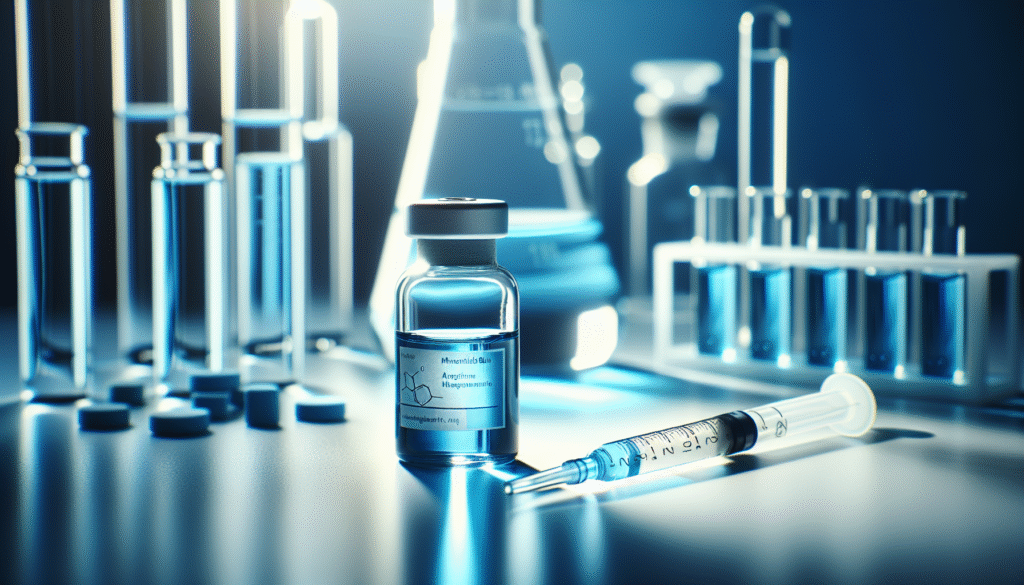
Have you ever wondered how a simple dye could hold significant potential for your health and well-being? Methylene blue, a chemical compound originally used in the textile industry, has gained attention for its diverse range of applications in medicine, biology, and even mental health. However, understanding how to use methylene blue safely and effectively is crucial for reaping its benefits while minimizing risks.

What is Methylene Blue?
Methylene blue is a synthetic dye with multifaceted applications. Historically, it served as a clinical antibacterial agent and an indicator in various biochemical assays. More recently, it has garnered interest for its neuroprotective properties and potential role in treating conditions such as Alzheimer’s disease.
Chemical Composition
Methylene blue, scientifically known as methylthioninium chloride, is a thiazine dye composed of carbon, hydrogen, nitrogen, and chloride. Its unique structure allows it to interact with cellular components, making it effective in various biological applications.
Historical Context
Originally developed in the 19th century, methylene blue was primarily utilized for treating malaria and as a biological stain. Over the years, researchers have continued to study its pharmacological properties, leading to expanded uses in modern medicine.
Benefits of Methylene Blue
Understanding the potential benefits of methylene blue can help you determine whether it aligns with your health goals. While research is ongoing, several areas have shown promising results.
Neuroprotection
Studies suggest that methylene blue may enhance mitochondrial function and provide neuroprotection. Its ability to reduce oxidative stress and improve cellular respiration has placed it at the forefront of discussions surrounding neurodegenerative diseases.
Antimicrobial Properties
Methylene blue possesses inherent antimicrobial properties that make it effective against various pathogens, including bacteria and fungi. Its mechanism of action involves the generation of reactive oxygen species, which disrupts microbial integrity.
Mood Enhancement
Emerging research indicates that methylene blue may have a positive effect on mood and cognitive function. Some studies have explored its potential use as an adjunct treatment for conditions like depression and anxiety.
Precautions and Safety Measures
While the potential benefits of methylene blue are intriguing, it is essential to approach its use with caution. Understanding the safety measures associated with its consumption is crucial.
Dosage Considerations
Determining the proper dosage can vary significantly based on individual needs and the purpose for which you’re using methylene blue. It’s imperative to consult with a healthcare professional before starting any new treatment, as they can guide you in establishing an appropriate dosage tailored to your circumstances.
Potential Side Effects
Like any compound, methylene blue is not without side effects. Common side effects include:
| Side Effect | Description |
|---|---|
| Urinary discoloration | One of the most typical reactions is a blue or green tint in urine, which is harmless but noticeable. |
| Gastrointestinal disturbances | Some individuals may experience nausea, vomiting, or diarrhea after ingestion. |
| Allergic reactions | While rare, some may have allergic reactions, including rash, itching, or swelling. |
| Photosensitivity | Methylene blue can increase sensitivity to sunlight, necessitating precautions during exposure. |
It is essential to monitor your body’s response after taking methylene blue and consult a healthcare professional if you experience concerning symptoms.
Drug Interactions
Methylene blue can interact with various medications, potentially leading to serious complications. It is critical to provide your healthcare provider with a comprehensive list of all medications and supplements you are taking. Notable interactions include:
| Medication | Interaction Description |
|---|---|
| SSRIs | Methylene blue can increase serotonin levels, potentially leading to serotonin syndrome. |
| MAOIs | Concurrent use with monoamine oxidase inhibitors may lead to hypertensive crises. |
| Antidepressants | Other antidepressants may interact, requiring careful monitoring. |
Practical Applications of Methylene Blue
Integrating methylene blue into your routine entails understanding its usage in practical scenarios. Below are some common applications and guidelines for responsible use.
Methylene Blue in Medicine
Treatment for Methemoglobinemia
Methylene blue is FDA-approved for treating methemoglobinemia, a blood disorder characterized by an inability to effectively transport oxygen. The recommended dosage typically ranges from 1 to 2 milligrams per kilogram of body weight, administered intravenously under medical supervision.
Antiseptic Agent
In certain cases, methylene blue can be used topically as an antiseptic agent. It must be diluted properly to avoid skin irritation. For wound care, a diluted solution (approximately 0.5% concentration) may be applied directly to the site after cleansing.
Methylene Blue in Research
Biological Studies
Researchers frequently utilize methylene blue in biological studies due to its dyeing capabilities. In microbiology, it aids in understanding the characteristics of microbial organisms through staining.
Experimental Therapeutics
Recent investigations have examined methylene blue’s role in neurological research. Emerging studies indicate its potential in treating Alzheimer’s through mechanisms related to oxidative stress and neuroinflammation.

Guidelines for Safe Use
Safety should always be your priority. Below are some guidelines to follow when using methylene blue:
Consult Healthcare Professionals
Prior to starting any regimen that includes methylene blue, seek professional advice. A healthcare provider can assess your medical history, current medications, and overall health to ensure that methylene blue is a suitable option.
Start with Low Doses
If you and your healthcare provider decide that methylene blue may be beneficial for you, starting with a low dose can help gauge its effects on your system. Gradually increasing the dosage under supervision can mitigate any adverse reactions.
Monitor Your Health
After introducing methylene blue into your routine, be vigilant about monitoring changes in your health. Keep a journal of your symptoms, including any side effects or improvements, and share this information during follow-up appointments.
Stay Informed
Educate yourself on recent developments and research findings regarding methylene blue. Staying informed allows you to make educated decisions about your health and use of this substance.
Common Misconceptions
With any chemical compound, several misconceptions may cloud your understanding of methylene blue. Addressing these can provide clarity.
Methylene Blue is Just a Dye
While methylene blue is widely recognized as a dye, its functionalities extend far beyond aesthetics. Its pharmacological properties and biological applications underscore its importance in medicinal contexts.
It is Completely Harmless
Although methylene blue has legitimate therapeutic use, it is not without potential risks. Due diligence in understanding its side effects and interactions is essential for safe consumption.
It is a Cure-All
Methylene blue may show promise for a variety of conditions, but it is not a miracle solution. It is essential to approach its use as part of a comprehensive treatment plan under the guidance of a healthcare professional.
Summary
The versatility of methylene blue is both fascinating and significant. With potential applications in neuroprotection, antimicrobial treatment, and mood enhancement, its benefits warrant consideration. However, safety must remain your foremost concern when contemplating its use.
By understanding methylene blue’s properties, possible side effects, appropriate dosage, and the context in which it is used, you can make informed decisions about incorporating this compound into your life. Always consult with healthcare professionals and remain vigilant about your health, enabling you to harness the potential of methylene blue safely and effectively.
Whether your interests lie in its medical applications or exploratory research possibilities, methylene blue offers a glimpse into the complex interplay between chemistry and biology. Your journey with this compound can be advantageous if guided by thorough knowledge and medical advice. By following the outlined precautions and guidelines, you can approach methylene blue with respect and responsibility, maximizing its benefits for your health and well-being.